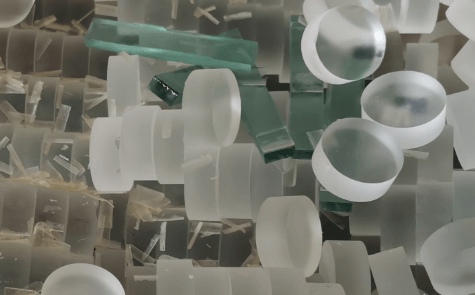The integration of endless wire saw technology has emerged as a transformative solution, revolutionizing the landscape of material cutting processes.
Composite materials, amalgamations of various substances, often present complex compositions, combining fibers and matrices to achieve superior structural integrity. Traditional cutting methods often struggle to maintain the integrity of these materials, leading to imprecise cuts, structural damage, and material wastage.
Endless wire saw technology stands at the forefront of innovation, offering a remarkable synergy of precision and efficiency in cutting composite materials. The utilization of diamond-infused wires in an endless loop configuration exemplifies the pinnacle of engineering precision. The continuous loop design minimizes material loss and ensures consistent and meticulous cuts across a myriad of composite structures.
The inherent advantage of endless wire saws lies in their adaptability to diverse composite materials, ranging from carbon fiber-reinforced polymers to composite laminates. The high-tensile strength of the diamond wire, coupled with its exceptional hardness, enables seamless navigation through these intricate materials without compromising their structural integrity.
Moreover, the implementation of endless wire saw technology has injected unprecedented vitality into the field of composite material cutting, dramatically enhancing efficiency. This streamlined, continuous cutting process greatly reduces downtime, not only increasing productivity but also optimizing production costs. It has transformed our understanding and application of cutting tools into a powerful means of boosting work efficiency, reducing waste, and increasing output. For industries that rely on precision composite components, such as automotive, aviation, and electronics manufacturing, this technological adoption brings significant economic benefits. Simultaneously, the application of this technology contributes positively to improving the production environment, enhancing worker safety, and advancing national energy-saving and emission-reduction goals. This revolution undoubtedly propels the composite material cutting industry continually towards a more efficient and environmentally friendly direction.
The integration of precision engineering and endless wire saw technology is paving a fresh chapter in the field of composite material cutting. As engineers, we are witnessing a game-changing transformation. Our industry is taking strides towards unparalleled accuracy, waste reduction, and improved productivity. This shift is not only revising our understanding of traditional manufacturing into a more efficient mode, but it also leaves a smaller footprint on the environment. Moreover, the fabrication of intricate composite structures will be more precise, with limitless potential. This technical advancement will continue to propel our industry forward, truly realizing precision control over the cutting of complex materials.
In summary, the incorporation of endless wire saw technology into the field of composite material cutting goes beyond ordinary technical progress; it is essentially a transformation of industry paradigms. This innovation not only reshapes our understanding of the possibilities of cutting complex materials, but also redefines the standards and expectations of industrial production. For the commercial and engineering sectors, this shift marks a new beginning where precise cutting has become a means to achieve higher efficiency and accuracy. Furthermore, through this approach, significant advancements have been made in the manufacturing and production industries in terms of resource conservation and waste reduction. More importantly, the introduction of this technology is also full of hope for innovation, it encourages engineers to continue exploring and developing new possibilities. Therefore, it can be firmly stated that the introduction of endless wire saw technology is a change to traditional manufacturing and production habits. It is propelling us towards greater efficiency, more precise accuracy, and greater innovation in engineering solutions.




